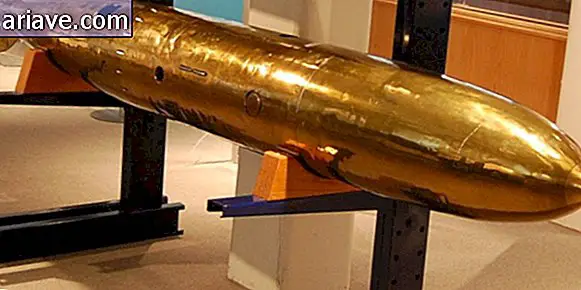Do you know the origin of tattoos?
You certainly know someone who has a design engraved on the skin. Or are you the one with a tattoo? Used to mark an important moment, to pay tribute or simply to beautify the body, tattoos have their origins long before Christ.
Over time and historical events, tattoo styles have changed, as has the adept audience carrying this kind of art on their skin. To better understand the history of tattooing, its influences and its origins, check out the article:
The first records
The earliest record of a tattoo was discovered in 1991 on the frozen corpse of a Copper Age man. The remains of the man, who was dubbed by scientists as "Ötzi", date from 3, 300 years before Christ. In his body were found several lines in the region of the back, ankles, wrists, knees and feet. The designs are supposed to have been created from the friction of charcoal in vertical cuts made on the skin.
After studying the body, x-ray examinations revealed bone degeneration alongside each of the tattoos. This led scientists to believe that the people of Ötzi - who are the ancestors of some Europeans - used the drawings as a kind of medical treatment to lessen pain.

With the development of civilizations, tattoos have gained other meanings. According to National Geographic, women who danced at Egyptian funerals around 2000 BC had the same abstract drawings of dashes and dots found in female mummies of that period. Later, there is also the emergence of tattoos representing Bes, the Egyptian goddess of fertility and the protection of homes.
The Romans and the Crusades
While some civilizations used to adorn their bodies with varied designs and techniques, the ancient Romans did not get tattoos because they believed in the purity of the human form. For this reason, tattoos were banned and reserved only for criminals and convicts.
Over time, the Romans began to change their view of tattooing, motivated mainly by the Breton warriors, who wore insignia of honor tattooed on their skin. So they came to admire the bravery of the warriors and the symbols they carried. Before long, Roman soldiers also recorded their own marks. Another interesting fact is that Roman doctors have developed excellent techniques for applying and removing designs.
Already during the 11th and 12th century crusades, tattoos were used to identify Jerusalem's soldiers. All those who had the design of the cross on their bodies would receive a properly Christian burial if they were killed in battle. National Geographic points out that after the Crusades, the tradition of skin art fell into disuse in the West for a period, but continued to grow in other parts of the world.

The origin of the name
In the early 18th century, European sailors had their first contact with islanders in the southern and central Pacific Ocean and had tattoos as an important cultural aspect.
In Hawaii, for example, when people were in mourning, they had three tattooed dots on their tongue. Already in Borneo, the natives used to record the image of an eye in the palm of the deceased to serve as a spiritual guide that would lead him to the next life. In New Zealand, the Maoris - a native people of the region - tattoo their faces as a form of expression and a way of identifying the family to which they belong.

In 1769, British Captain James Cook landed in Tahiti, where the word "tatau" was used to denote the way the tattoo was made - making the ink penetrate the body. One of the tools used by Pacific Islanders to make the designs was a sharp shell attached to a wooden stick. The word "tatau" is believed to have given rise to the term "tattoo", one of the most commonly used names for designs engraved on the skin.
The oriental tradition
Tattooing has been a widespread practice in Japan since the 5th century BC. Used to beautify the body or to mark criminals, the art was banned in 1870. This made tattoo artists illegally attending and gave rise to unique designs that are now recognized as typically Japanese.

Yakuza - also known as the Japanese mafia - is one of the top tattoo references in Japan. Using a technique called “tebori”, which is more rudimentary, time consuming and painful than machine tattooing, Yakuza members cover their bodies from neck to ankles with meaningful designs such as the dragon, the carp, the tiger, the wrestlers and some kinds of flowers.
The tattoo these days
In 1891, American inventor Samuel O'Reilly patented the world's first electric tattoo machine, leaving behind the tools traditionally used in the West. In the following years, the tattoo was marked as a way of expression of counterculture groups, sailors and veterans of World War II.

Throughout the history of tattooing, designs engraved on the body have always generated controversy and, in some cases, were received with prejudice. Currently, people who carry skin images no longer belong to a particular group. The designs are the most varied and serve as a form of individual expression.
The popularization of tattoo practice can be seen at fairs and conventions that are regularly organized in various countries and bring together a very eclectic audience that has the only common point of interest for designs engraved on the skin.
* Originally posted on 16/07/2013 .
***
Do you know the Mega Curioso newsletter? Weekly, we produce exclusive content for lovers of the biggest curiosities and bizarres of this big world! Register your email and do not miss this way to keep in touch!











